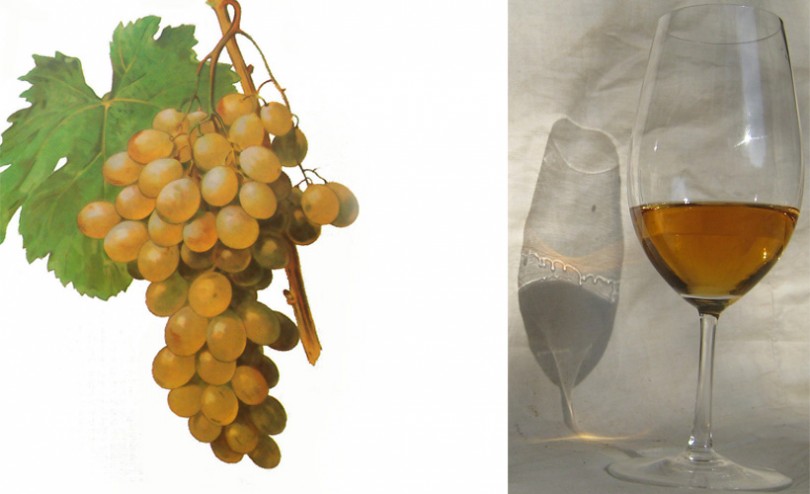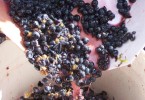Moscato di Alessandria or Zibibbo, the prince of the Sicilian sweet wines
Pantelleria: land of Moscato and Passito
Zibibbo is widely cultivated in the island of Pantelleria, the vineyards are characteristics in fact they are cultivated inside holes to protect the plant from the dry winds coming from Africa and to collect all the night humidity. Rains, in fact, are pretty rare on the island. The grapes used to produce Moscato and Passito withers on the plant exposed to the sun. The yield per hectare is low, in fact, is 10 tons. The natural minimum alcoholic volume has to be of the 12%.
Moscato di Pantelleria has a beautiful yellow colour tending to amber. The scents are intense, reminding flowers and ripe fruits, apricots, bouquets and figs. The palate is sweet and aromatic. The alcoholic strength is 15% with at least 11%.
Pantelleria Passito is the result of the withering of the grapes on specific trellis. Its color is golden yellow with amber shades. The scents remind dried fruit like figs, dates, apricots. To the palate it is sweet, aromatic, soft and fresh. A note of sapidity intervenes to balance the taste. Persistence is long. The best pairings with Moscato and Passito are with the Sicilian pastry. Passito wine is perfect with blue and spiced cheeses.
Malvasia, ambition of Eolie islands
Malvasia delle Lipari is a Sicilian sweet wine produced in the smaller islands, in this case the Eolie Islands in the province of Messina. The most extended vineyards are located in Salina and Stromboli. The vine is cultivated in these areas till the 4th century BC. Grapes are harvested when they have reached a degree of over-maturation and let it dry in the sun for 10-15 days.
The next step is a delicate vinification at the press and the juice obtained from sugar is placed in small barrels. Its consumption is recommended after 2-5 years. Its color is golden yellow tending to the amber. The complexity of its scents reminds honey, dried fruit, cinnamon and vanilla. In the mouth it is balanced and harmonious. The ideal combination is with dry pastry based on hazelnuts and almonds.
Siracusa, famous for its Moscato.

Moscato di Siracusa is made with Moscato Bianco. The vineyards are located on the south-eastern coast of Sicily. Its production is not relevant. Historical hints say that Moscato di Siracusa was presented in Paris in 1900 at the Universal Exhibition, obtaining a prestigious award. The alcoholic strength is 14 + 2.5% and its consumption is recommended within 2 years.
Moscato di Noto, fresh and sweet
Noto is located in the extreme southern tip of Sicily. Towards the middle of the last century, people tried to experience its production with the aim of obtaining a sweet Sicilian wine not aged but ready for an immediate consumption. Its color is straw yellow tending to the golden. On the nose the typical hints of honey, apricots, figs and vanilla. To the palate it is delicious and it can be paired with ricotta cakes.
Other Sicilian sweet wines
Apart from the traditional ones, all over the island people produce sweet wines that come from atypical vines. Cataratto, insolia, grillo and chardonnay are often addressed to the production of sweet wines or late harvest.
Image source: wikimedia.org







